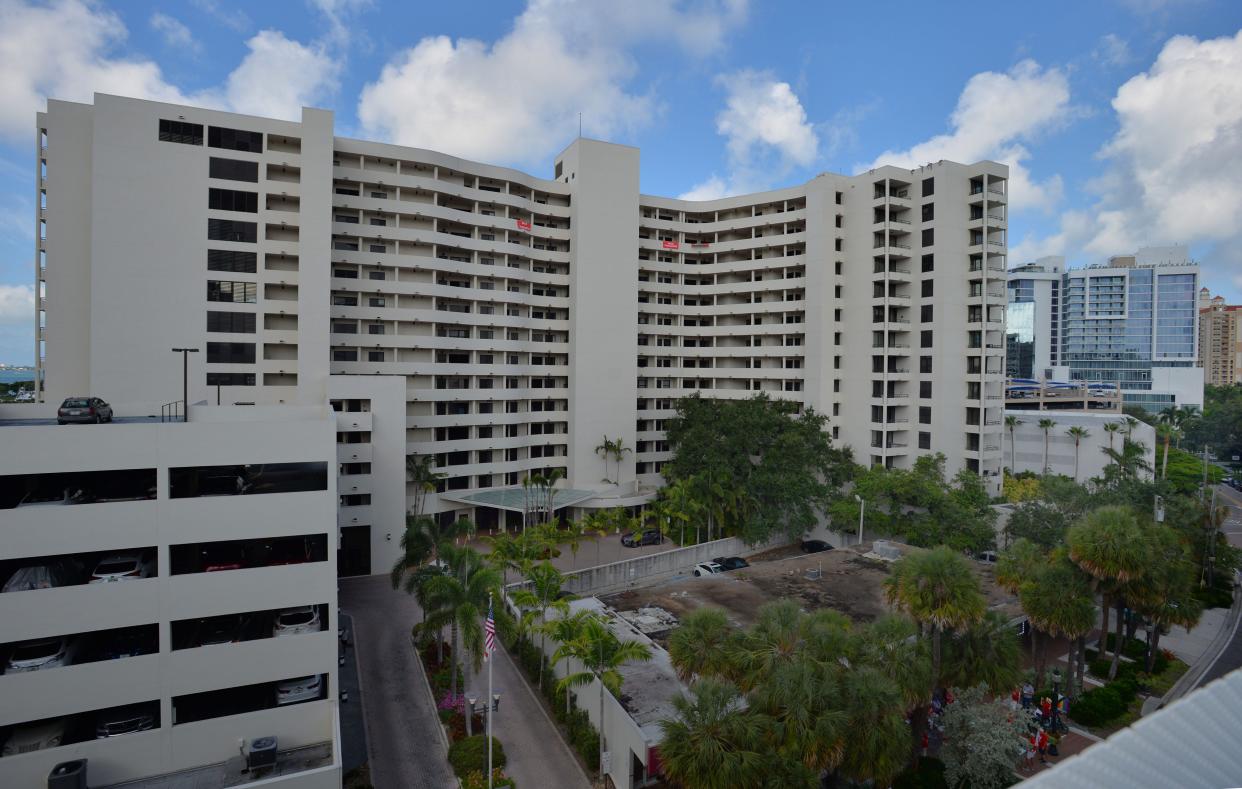State law passed after Hurricane Ian negates Sarasota's move to control taller buildings

A loophole in Sarasota's development rules city officials closed last year has been reopened by a state law passed after Hurricane Ian, setting the stage for potential construction of the tallest building downtown and the opportunity for developers to build even more in coming months.
The City Commission changed Sarasota's zoning code last April to regulate the uninhabitable space between floors where large buildings accommodate air conditioning, plumbing and electrical equipment. The commission acted after the property owner at 1260 N. Palm Ave. applied for a 342-foot-tall luxury condo tower in the heart of downtown, called The Obsidian, which would be the tallest building in Sarasota by about 50 feet. The extra height, to be attained by adding more space between floors would create the opportunity for more units with waterfront views.
Previous coverage: Rally to save Sarasota from 'skyscrapers' as tallest building project goes to officials
But the city's attorney now says the City Commission's move to regulate so-called "interstitial space" between floors has been negated by law passed by state lawmakers and signed by Gov. Ron DeSantis last June.
City Attorney Robert Fournier, responding to a citizen's email this week about The Obsidian proposal, said Senate Bill 250 prevents local governments within 100 miles of Category 4 Hurricane Ian's Lee County landfall from adopting more restrictive development codes or growth policies than what was in effect when the storm hit.
"The city is prohibited by SB 250 from even proposing, let alone adopting, any more restrictive provisions in its Zoning Code until after Oct. 1, 2026." Fournier said.
Because the legislation is retroactive to when Hurricane Ian struck, the City Commission's action to regulate the space between building floors is void as a matter of law, Fournier explained.
His conclusion would appear to give the developer the upper hand in a battle with downtown residents over The Obsidian's height, and create a window for other potential downtown developers eying taller buildings to use the same strategy to build higher.
At the time Hurricane Ian hit, Sarasota regulated building heights by the number of floors, with the maximum height allowed for a single floor of 14 feet between finished floor to finished ceiling. It did not regulate the space between floors.
Opponents of The Obsidian's building plan aren't conceding yet.
The current 18-story project has been scheduled for review May 15 by city development regulators, with the opponents still objecting to the revised plan on numerous fronts, including what they describe as a 19th floor above what the zoning code allows.
Condo owners in the area — particularly Bay Plaza, which boarders The Obsidian on three sides — organized early on against the project over concerns residents described as abuses of the zoning code to push as many of the units as high as possible for the developer to cash in on water views.
The Obsidian project was denied by the Sarasota Planning Board in 2023, but developer Matt Kihnke resubmitted an updated plan that was only slightly less tall early this year.
Despite the city's ostensible regulation of the space between floors, Kihnke's new proposal still had "at least two feet of interstitial space between every floor with some interstitial space as excessive as five feet," according to a letter from Morgan Bentley, an attorney representing Bay Plaza condo owners.
Fournier said the applicant did so by relying on the new state law.
More: Sarasota's proposed tallest building denied zoning changes; appeal goes to Planning Board
But in a five-page letter to the senior planner reviewing the project, Bentley criticized the project on grounds it didn't meet requirements for retail uses, included additional parking floors as a means to increase building height and doesn't meet the city's codes on waste and recycling management.
"While the 2024 Plan provides additional retail, slightly reduces the height of the building and minimally reduces the amount of interstitial space" it "still fails to accomplish the goals" the city's downtown plans and regulations, Bentley wrote.
Bentley told the Herald-Tribune the city's development code was designed to give some flexibility to developers by using floors as a measure instead of a defined height.
"They created a monster because the code gives developers some flexibility and they're driving trucks through the loopholes," he said.
Still, he believes the other flaws in the project will spur rejection by officials again.
Obsidian Developer defends project: Sarasota developer responds to criticism of proposed tallest building downtown
David Lough, the president of the Downtown Sarasota Condominium Association, said he was shocked when he read Fournier's response regarding the impacts of Senate Bill 250 and is worried about the effects it could have on other city ordinances passed since Hurricane Ian.
"I'm still trying to pick myself up off the floor that something like this could happen," he said.
This article originally appeared on Sarasota Herald-Tribune: Sarasota building height control negated by post-hurricane state law

